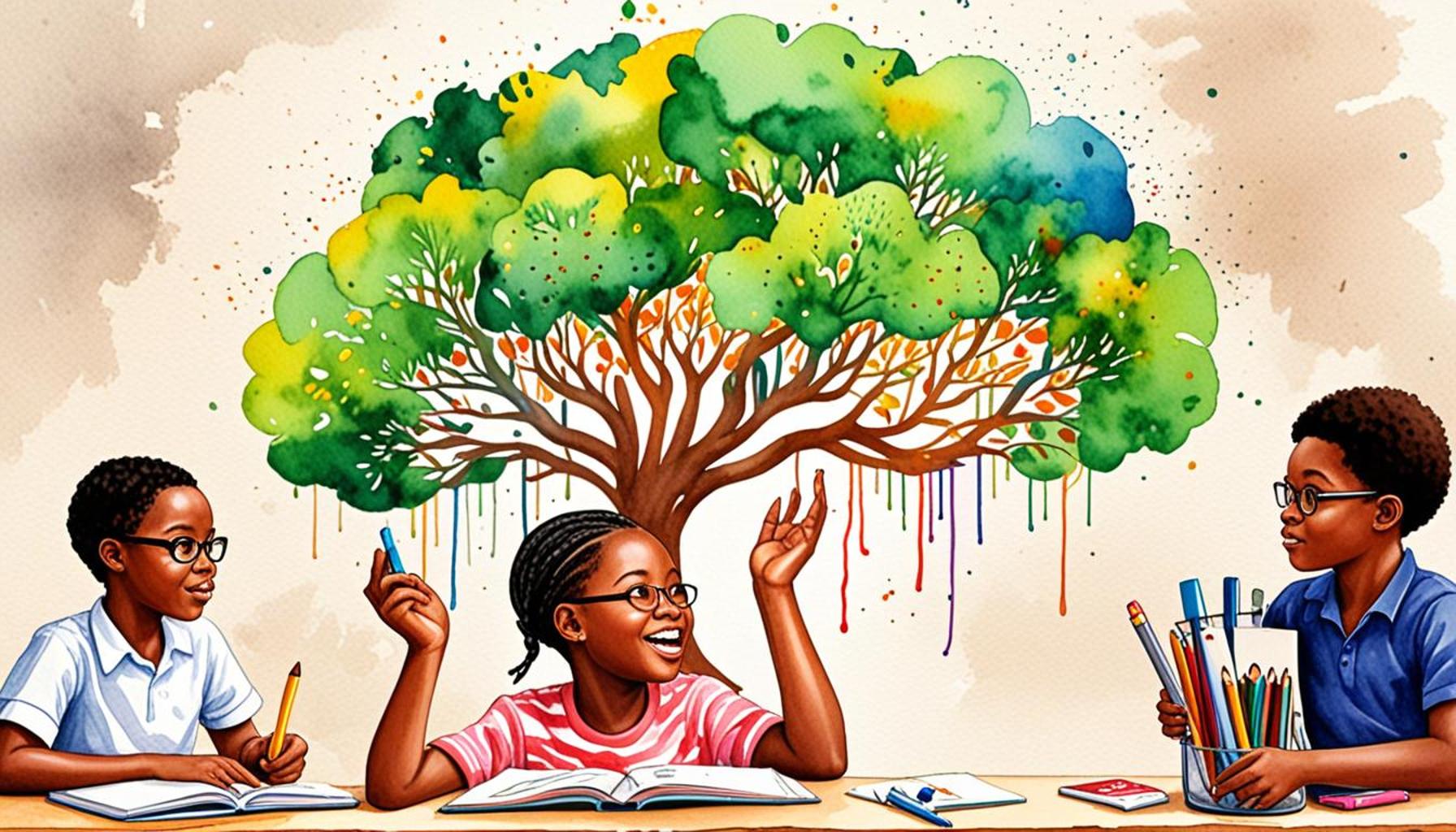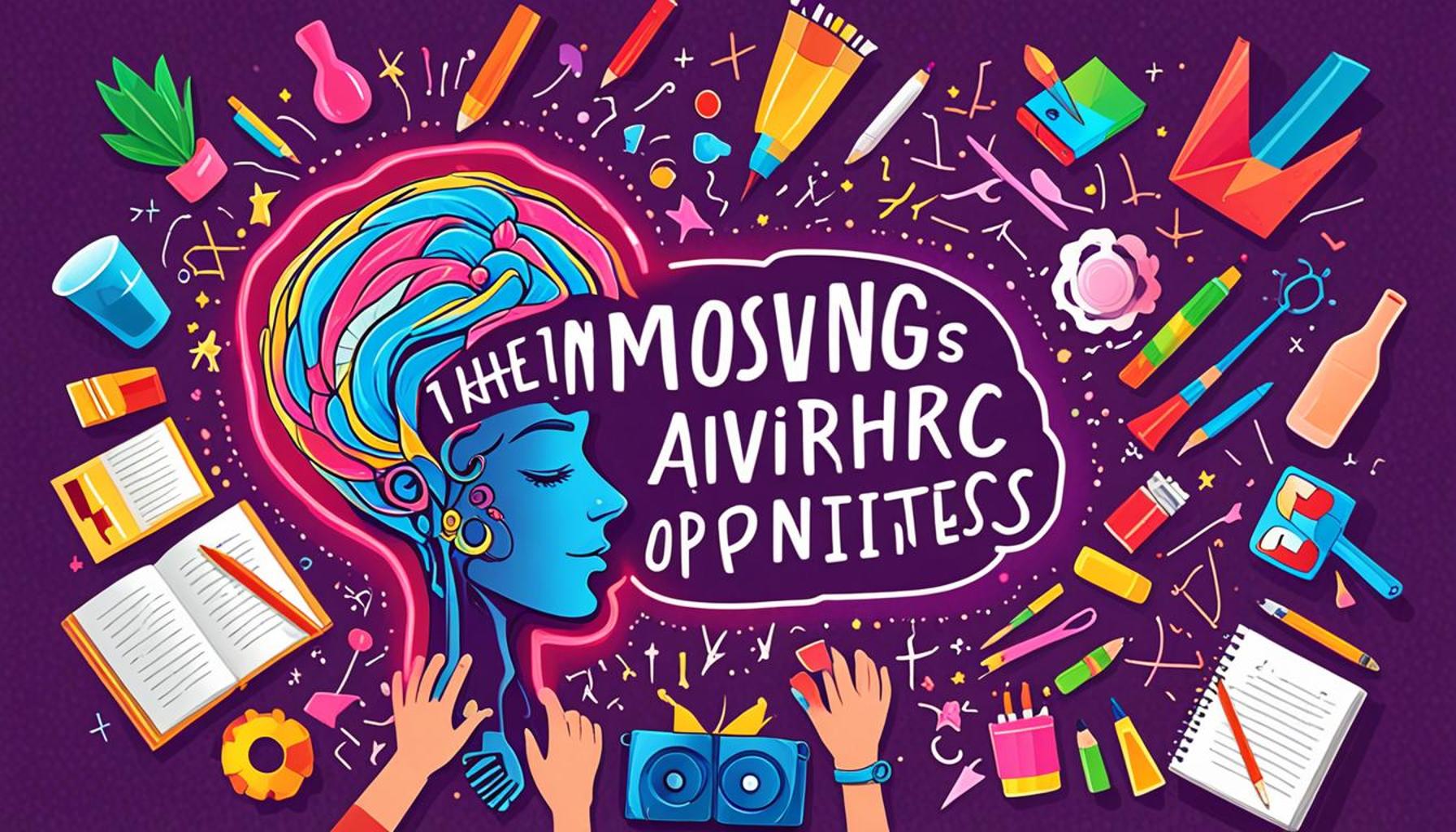How to Create a Learning Environment That Fosters Growth Mindset

The Growing Importance of a Growth Mindset
In today’s rapidly evolving world, the ability to adapt and learn continuously is more crucial than ever. A growth mindset, a term coined by psychologist Carol Dweck, emphasizes the belief that abilities and intelligence can be developed through dedication and hard work. This perspective contrasts with a fixed mindset, where individuals believe that their abilities are static and unchangeable. Establishing a learning environment that fosters a growth mindset can lead to enhanced motivation, resilience, and overall academic success.
The Benefits of a Growth Mindset
Creating such an environment is not just beneficial for students; it can also empower educators and professionals to thrive in their respective fields. The benefits extend beyond the classroom, influencing how individuals tackle challenges, manage setbacks, and promote their own intellectual growth. Adopting a growth mindset encourages people to view challenges as opportunities to learn rather than insurmountable obstacles.
Key Elements of a Growth-Oriented Environment
To cultivate a growth mindset, certain elements must be present. Encouraging a love for challenges is essential, as it helps individuals push their boundaries and explore new areas of knowledge. Promoting collaboration is another vital component, as it creates a supportive community where ideas are shared, and learning from others is valued. Providing constructive feedback is crucial, offering learners the guidance they need to improve without being disheartened by setbacks.
Top 5 Strategies to Cultivate a Growth Mindset
- Emphasize Effort Over Talent: Highlight the role of dedication and perseverance in achieving success, rather than inherent talent.
- Celebrate Mistakes as Learning Opportunities: Encourage learners to embrace errors as valuable experiences that lead to growth and insight.
- Set Achievable Goals: Help individuals set realistic, attainable objectives that serve as stepping stones to larger achievements.
- Encourage Reflective Practices: Foster an environment where self-reflection is encouraged, allowing learners to assess their progress and identify areas for improvement.
- Create a Supportive Community: Develop a culture that encourages mutual support, where learners feel secure to express ideas and ask questions.
By implementing these strategies, educators and leaders can equip individuals with the tools to embark on a journey of lifelong learning and success. A growth mindset empowers people to transcend limitations, fostering an enduring passion for discovery and improvement.</

RECOMMENDED: Check out this similar article
Top 5 Strategies to Create a Learning Environment that Fosters a Growth Mindset
Creating a learning environment that promotes a growth mindset is a multifaceted approach that can significantly influence the cognitive and emotional development of learners. This approach is crucial in today’s rapidly changing world, where adaptability, innovation, and resilience are more valuable than ever. The journey toward fostering a growth mindset begins with understanding the psychology that underlies it: the belief that intelligence and abilities are not static but can be developed through dedication and hard work. Let’s explore the top five strategies for cultivating such an empowering environment in educational settings, professional development, and even in personal life.
5. Encourage Curiosity and Questions
By creating a culture where asking questions is cherished and encouraged, we lay the foundation for lifelong learning. Curiosity is the engine of intellectual development; it drives individuals to venture beyond the known into the realm of discovery. Establishing safe spaces for inquiry is paramount. In such environments, learners feel free to express their curiosity without the fear of judgment. By embracing these methods, educators can stimulate a fervent pursuit of knowledge:
- Draft thought-provoking questions that compel students to engage in critical thinking. For instance, rather than asking, “What is the capital of France?” consider asking, “How does the geography of France influence its political decisions?”
- Design open-ended assignments that invite multiple perspectives and solutions, encouraging analytical and independent thinking.
- Incorporate “question of the day” activities to ignite daily curiosity and stimulate ongoing discussion.
By fostering a culture of curiosity, learners understand that questioning is integral to growth, leading them to become more inquisitive and self-driven.
4. Introduce Constructive Feedback Mechanisms
Providing feedback that is open and constructive transforms it from a demoralizing critique into a tool for growth. Feedback should be viewed as an opportunity to advance learning, with a focus on specific, actionable insights that relate to the task at hand rather than personal attributes. Establishing a systematic approach to feedback can boost confidence and development:
- Implement peer feedback sessions to capitalize on collaborative learning. These sessions encourage students to articulate their thoughts constructively and learn from each other’s insights.
- Organize regular check-ins with learners to address strengths and improvement areas, ensuring they have a clear path forward.
- Encourage self-reflection through journals or growth portfolios, where learners can document their progress, setbacks, and the lessons gleaned from them.
Through constructive feedback, learners reconceptualize setbacks as essential parts of the learning journey, enhancing their resilience and determination to improve.
3. Model a Growth Mindset Yourself
One of the most impactful ways to teach a growth mindset is by embodying it yourself. Leaders, whether they are teachers, parents, or managers, have the power to set the tone for an environment conducive to growth. Demonstrating a transparent approach to personal development invites others to view challenges as opportunities for growth. Consider these strategies:
- Share personal stories of overcoming obstacles and the growth that resulted. Such stories inspire and humanize the learning process, showing that even experts face hurdles.
- Discuss your ongoing journey of learning openly. By showing that learning is a continuous process, you emphasize the value of perseverance.
- Engage in professional development activities and share those experiences with those you mentor, highlighting that everyone can learn and improve regardless of their starting point.
By practicing what they preach, leaders not only inspire but also validate the potential for growth within everyone, reinforcing the journey as equally important as the destination.
2. Foster Collaboration and Teamwork
Collaboration is not simply about working together; it’s about learning from one another. When learners engage in teamwork, they gain insights from diverse perspectives that they might never have considered alone. Cultivating a spirit of cooperative learning enhances intellectual and social growth. These strategies can encourage collaboration:
- Initiate group activities that require collective problem-solving, thereby reinforcing the concept that challenges are best approached as a team.
- Design projects necessitating a variety of skills, prompting students to value and leverage each other’s strengths.
- Promote peer mentoring, wherein learners teach and support one another, fostering an inclusive and supportive learning community.
Through collaboration, learners appreciate diverse viewpoints and understand that teamwork can lead to innovative solutions and personal growth.
1. Create a Safe Space for Failure
A pivotal component of nurturing a growth mindset is normalizing failure as an essential and constructive aspect of the learning process. Creating a safe haven where failure is accepted fosters risk-taking and innovation. This mindset transforms fear of failure into motivation for enhancement. Encourage these principles:
- Normalize discussions about failures and the insights gained from them. Use examples of successful individuals who have failed numerous times before achieving their goals.
- Conduct activities where outcomes are uncertain, encouraging learners to step outside their comfort zones and build resilience in the face of ambiguity.
- Celebrate efforts and progress rather than solely successful outcomes, reinforcing the idea that persistence and effort are key drivers of achievement.
By cultivating a safe space for failure, learners are empowered to push their boundaries and embrace challenges, understanding that setbacks are stepping stones to success.
In conclusion, fostering a growth mindset is an ongoing endeavor that requires a comprehensive approach. By employing these strategies, educators and leaders can craft environments that not only encourage growth but also empower learners to embrace challenges, collaborate effectively, and continually strive for improvement. This holistic approach ensures that individuals develop the resilience and agility needed to thrive in an ever-evolving world.
| Category | Detailed Information |
|---|---|
| Promoting Resilience | By creating an environment where mistakes are viewed as learning opportunities, individuals can foster resilience and a willingness to tackle challenging tasks without the fear of failure. |
| Encouraging Curiosity | An atmosphere that encourages questions and exploration helps nurture curiosity, essential for driving the desire to learn and grow. This can be achieved through open discussions and hands-on activities. |
| Fostering Collaboration | Collaborative learning environments inspire individuals to share different perspectives, enabling a deeper understanding of concepts while building a sense of community among learners. |
| Adapting to Individual Needs | Valuing individual learning styles and pacing can significantly enhance the learning experience, making it more personalized and ultimately leading to a greater engagement with the material. |
In fostering a growth mindset, the key is to create an engaging and supportive learning environment where individuals feel empowered to pursue their goals without the shackles of fear or doubt. Emphasizing resilience allows learners to embrace challenges, knowing that setbacks ultimately contribute to their development. This perspective transforms failure into a powerful learning tool rather than a roadblock.Encouraging curiosity is equally vital. When learners are invited to ask questions, investigate, and connect with the material on a deeper level, their thirst for knowledge expands. This natural inclination toward inquiry creates a culture of exploration that energizes the learning process.Collaboration further enhances this atmosphere. When individuals come together to share ideas, solve problems, and learn from each other, communities of practice emerge. These communities not only improve understanding but also build interpersonal skills that are essential in both academic and professional settings.Lastly, recognizing and adapting to the unique needs of each learner creates a level of inclusivity that enriches the entire educational experience. Personalizing learning strategies ensures that no one is left behind and that every participant can thrive according to their abilities and interests. This adaptability fosters engagement and creates a sense of ownership over their educational journey, propelling learners towards success.
CHECK OUT: Click here to explore more
Frequently Asked Questions About Creating a Learning Environment that Promotes a Growth Mindset
What is a growth mindset and why is it important in a learning environment?
A growth mindset is a belief that abilities and intelligence can be developed through dedication and hard work. This concept is crucial in a learning environment as it encourages students to embrace challenges, learn from criticism, and persist despite setbacks, ultimately leading to higher achievement. A classroom that supports a growth mindset often results in more motivated and resilient students who see failures as opportunities for growth rather than insurmountable obstacles.
How can teachers create a learning environment that fosters a growth mindset?
Teachers can cultivate a growth mindset by emphasizing the process of learning rather than final results. This can be achieved by praising effort and perseverance over innate ability. For example, acknowledging a student’s dedication or improvement can reinforce the idea that effort leads to mastery. Additionally, teachers should create a safe space for making mistakes, as they are key learning opportunities. Encouraging self-reflection and setting realistic goals can also empower students to take ownership of their learning journey.
What role do parents play in supporting a growth mindset at home?
Parents can support a growth mindset by modeling positive attitudes towards learning and setbacks. It’s essential for parents to focus on the effort rather than the outcome when discussing their child’s achievements. Phrases like “You worked really hard on this” or “What strategies did you try?” can shift the focus to the growth process. Moreover, parents should encourage curiosity and a love for learning by providing opportunities for exploring new activities and celebrating small victories along the way.
Are there any specific activities or exercises that can promote a growth mindset?
Certain activities can effectively promote a growth mindset. For instance, reflection exercises where students consider a challenge they faced and how they overcame it can be powerful. Exploring stories of famous personalities who overcame great failures can also inspire students. Additionally, regular group discussions that highlight effort, learning strategies, and the emotional responses to challenges can reinforce the principles of a growth mindset. Incorporating these activities regularly can solidify a culture of continuous learning and improvement.
Can technology play a role in fostering a growth mindset in students?
Technology can be a valuable tool in promoting a growth mindset by offering platforms for personalized learning and immediate feedback. Educational apps and games that adapt to a student’s learning pace and provide instant performance feedback can help students set and achieve personal learning goals. Furthermore, online resources and forums can connect students with peers and mentors who share a commitment to growth, allowing them to access diverse perspectives and support networks that encourage continuous development.
LEARN MORE: This related article may interest you
Conclusion: Fostering a Growth Mindset Through Learning Environments
Creating an environment that promotes a growth mindset is vital in nurturing lifelong learners and innovative thinkers. Throughout this article, we’ve explored the top strategies to cultivate such an atmosphere, emphasizing the importance of these techniques to growth mindset principles.
Firstly, encouraging a culture of curiosity stands out as a cornerstone for fostering growth. This involves prompting questions, welcoming mistakes as learning opportunities, and inspiring exploration beyond conventional boundaries. Providing constructive feedback and celebrating effort over innate talent help students and employees learn to value perseverance and resilience, positioning challenges as essential parts of their development journey.
Furthermore, personalizing the learning experience ensures individual needs and paces are respected. By creating adaptable learning paths, providing diverse resources, and recognizing each person’s progress, we bolster a sense of agency and motivation. Additionally, promoting collaboration and peer learning fosters a sense of community and shared responsibility, encouraging learners to support and inspire each other to reach their potential.
Finally, the integration of reflective practices stands as an essential component. It allows individuals to introspect, understand their learning processes, and set goals for improvement. Reflection transforms learning into a meaningful, self-directed activity that aligns with growth mindset principles.
In closing, cultivating an environment conducive to a growth mindset is a multifaceted endeavor that requires deliberate strategies and commitment from educators and organizations alike. This approach not only enhances learning outcomes but also prepares individuals to thrive in an ever-evolving world. In an age where adaptability and lifelong learning are crucial, developing such environments is more important than ever, paving the way for a future driven by curiosity, innovation, and growth.


